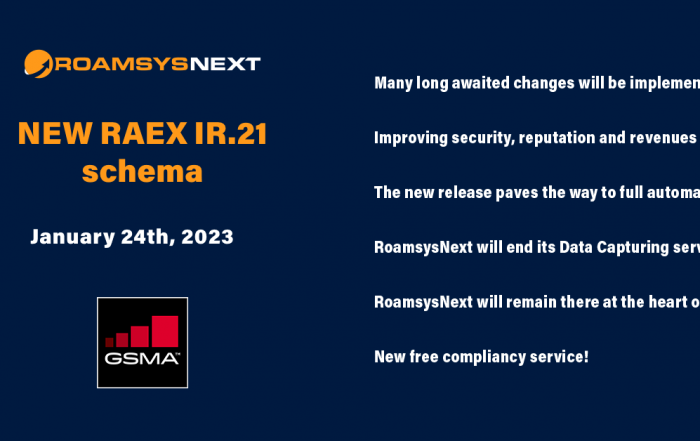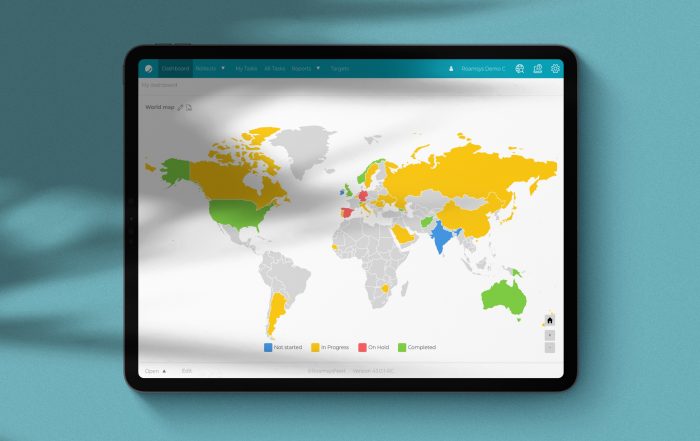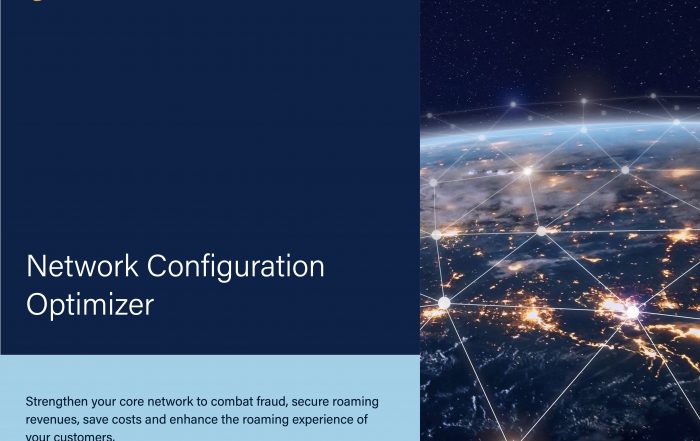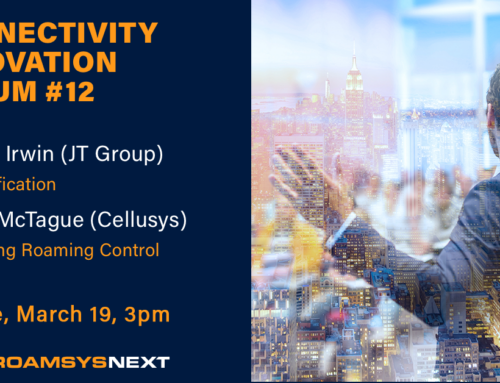
Gabriele Lieser
CUSTOMER SUCCESS MANAGER
Summary
The business model of fraudsters requires them to find ways to attract the attention of potential victims and entice them to reveal sensitive information. In doing so, they gain access to user accounts of all kinds and do their mischief there. Identity fraud can already start with the subscription process when a contract is signed with a fake identity. SIM-swap fraud happens when fraudsters use their victims’ SIM cards to take over a legitimate subscriber account.
Operators can prevent identity fraud with the verification of data in terms of suspicious IP-addresses, number ranges, IMSIs and fraud numbers, as well as working on speeding up the process. Subscribers can contribute their share to securing their accounts with the help of PINs and authentication apps.
Mobile network operators are faced with a truly Herculean task having to meet three challenges at once: they must comply with national and international regulations, the loss of data and revenue must be reduced, and the brand image must be protected so as not to shake the relationship of trust between subscribers and their network operator.

In RoamsysNext Insights our experts share their views on extensive industry topics and possible solutions we can offer.
Especially with identity fraud it often takes a long time until the intrusion is discovered. It starts already during the subscription process when criminals turn up at the point of sale with a fake identity and conclude a contract. Identity verification is usually performed manually by a salesperson with limited sources of information. It is difficult for the salesperson to tell whether ID documents and bank account data have been stolen or falsified. Thus, fraudsters can leave the store with high quality, heavily subsidized smartphones, resell them or use them for other mischief. Once a fake subscription is set up, the fraudster has access to a wide range of value-added services, including not only phone calls, television and the Internet, but also mobile financial services such as mobile banking and mobile payment. For operators, this means that there are more and more channels that need to be secured.
It’s all about verification
Another major problem is so-called SIM-swap fraud, where fraudsters use their victims’ SIM cards to gain access to a legitimate subscriber. A SIM-swap takes place when the criminal contacts the mobile phone provider and can convince the call center employee that he needs a new SIM card. This creates a new card, but the legitimate owner is unaware of this. Once the affected phone number is assigned to a new card, all incoming calls and text messages are forwarded to the phone that contains the new SIM card. This SIM card can then be used to authorise transactions with the real subscriber’s bank, make online purchases, or engage criminal activities such as money laundering.
There have been a number of high-profile hacks where SIM-swapping was used, including some on the social media sites Instagram and Twitter. In 2018, then 15-year-old Ellis Pinsky from Irvington, New York, and 20 accomplices accessed the crypto-currency accounts of investor Michael Terpin, founder and CEO of Transform Group, using SIM-swaps: approx. $24 million were stolen.

“Hit and run” – no more!
Fraud and robberies happen every day, and not only public figures suffer. The common man provides a large attack surface and pays a bitter price for fraud. Nevertheless, there are ways to avoid such attacks. Individuals should set up a PIN code for their mobile operator account. Unfortunately, this does not protect against attacks that are carried out with the help of insiders. Another option is to use common authenticator apps such as Google Authenticator or LastPass Authenticator so that the person has all codes in one central location and has them available at any time, even when the phone is offline.
Prevention is better than cure
In order to prevent the above attacks, it is essential for operators to analyze which source numbers are associated with which countries, networks, hubs and businesses to gain and maintain control of their threat landscape. As always, the time factor and reliable data is crucial. Analysts and investigators are doing their best to prevent attacks and stay vigilant of the threat landscape. With the help of signaling firewall solutions they are already able to provide proactive protection, but still, the limited visibility of global fraud trends takes its toll.
Call them lazy or smart, fraudsters transmit successfully launched attacks to similar organizations on a different campaign. For this reason, verifying numbers has never been more important, and the screening of incoming communication for their trustworthy origin is a safe way to prevent fraud. The good news is, someday, there will be a platform to tell in a very automated and a very curated way the details of suspicious IP-addresses, number ranges, IMSIs and fraud numbers.

Let’s work together, not against each other
In order to meet three challenges at once: complying with national and international regulations, reduction of loss of data and revenue, and the protection of the brand image, it is inevitable for MNOs to ensure that their mobile services are secure and reliable. We stick to our goals and provide our customers and their subscribers with seamless accessibility, great quality perception and a unique customer experience.
However, the essential part of security technologies is also to find a good balance between security and usability. With the help of the latest technologies and together with the GSMA, we are working on more efficient solutions. Consequently, we are more and more keeping an eye on upgrading security aspects. Stay tuned for more advanced developments from the house of RoamsysNext.
Gabriele Lieser joined RoamsysNext in 2020 as Customer Success Manager to strengthen the bonds with our increasing number of customers and to support the marketing team. Gabriele has a strong background in corporate sales. She studied at the Universities of Trier (Germany) and Manitoba (Canada) and is incorporated in the RoamsysNext Client Service team.
“The team is a crucial asset”
It has been an exciting year for RoamsysNext. And as 2023 is coming to an end, we took the opportunity to talk with CEO Michael Grasmück about the past year, the growing team that becomes more and more international, and the comeback of an industry institution.
15 years of RoamsysNext – Driving Global Connectivity
RoamsysNext turns 15, so we talked with CEO Michael Grasmück about the anniversary, the early years, the move to Luxembourg and the future within the fast-developing roaming industry.
The new age of the IR.21 – Be ready for the full automation!
The new RAEX IR.21 schema will be released early 2023 with great changes coming that allow us to revolutionize the way we work with the IR.21 data.
Reporting at a glance: The RoamsysNext Dashboards
The RoamsysNext tools offer many reporting functionalities of which the dasboards play an important role. Learn more about using them in practice to identify bottlenecks, visualize your team's performance and bring a smile to your management's faces.
End-2-End-Automation with Network Configuration Optimizer
The RoamsysNext Network Configuration Optimizer is the perfect solution to make the shift from manual processing to more and more automated processing, with the option to move to full automation. Let's see how it works.
From Roamsys to RoamsysNext
Sixteen months ago, Roamsys relaunched and became RoamsysNext. Time to look back to a year we never expected to happen.
How to Stay Secure
What can MNOs do to stand up to the ever-growing tide of telecom fraud and protect their assets? Stay alert, use great tools, collaborate with other market players, and take the fight to the fraudsters.
Telecom Fraud Hurts
Telecom fraud is a rapidly growing area that has serious effects on national critical infrastructure (civil, healthcare, energy, agriculture...) and wider industrial processes.
The GSMA MISP – How Does it Help?
Malware information sharing and threat intelligence sharing has unbeatable benefits that make any caveats and challenges look small in comparison.
The Experts behind RoamsysNext Insights
RoamsysNext Insights has a growing fan base due to its substantial reports. With a wide variety of great information and exciting insights, they inspire beginners as well as professionals.
How to Treat 2G and 3G Closures without Becoming an Archivist?
As we are entering the era of 5G, legacy networks are in a state of flux and lose significance. This blog is about how the sunsetting of 2G and 3G networks will impact mobile communication.
How to Choose a Signaling Firewall Wisely
In times of global turbulences and increasing fraud attacks the decision for a sophisticated signaling firewall becomes more and more a priority. Some general considerations help to narrow down the choice.
Identity Fraud in Telecom
Identity fraud robs people of their virtual existence; it costs time, money and nerves. But there are countermeasures that help.
How to Tackle the Challenges in Combating Telecom Fraud
Telecom fraud can have dire effects on critical infrastructure and always causes painful loss of revenue. See how the industry's joint efforts tackle the challenges in combating telecom fraud.
Face the Breach: Rehearse an Emergency Before it Happens
In case of a breach, most companies are poorly prepared to take quick action. Have a look at some ideas on how to make the best of a difficult situation and save valuable time.
Working from Home during a Global Pandemic
Due to the broad introduction of remote working, businesses need to rethink their current cyber security measures and consider how they need to be adapted or further developed.
The Future of Roaming Trainings – An interview with Milja Hofman, CEO Roamingwise
Roamingwise is a well-known provider of roaming trainings, seminars and consultancy in a variety of international roaming topics. In our interview, CEO Milja Hofman reveals how she prepares professionals to drive the roaming world.
Historical Fraud Incidents and Lessons to be learned
In the course of history, no era is free from the practice of deception for personal benefit. Let’s have a look at what we can learn from historic fraud cases from ancient Greece to modern times.
Two-Factor Authentication rules!
For some time now, we have introduced 2FA and have contributed our share to provide more secure access to our tools. Norbert Becker, Head of Software Development, picks up the thread and provides engaging insights into his area of responsibility.
Introducing: The RoamsysNext Network Configuration Optimizer
Learn how the RoamsysNext Network Configuration Optimizer enables MNOs to switch safely to full automation and growing roaming revenues by providing effective and secure data management of all roaming related business information.
Introducing: The RoamsysNext Wholesale Roaming Manager
The RoamsysNext Wholesale Roaming Manager provides powerful collaboration and reporting tools for all roaming partner relationships by converging everything from service openings to the user’s roaming footprint, test SIM cards and tariffs, document and contact management.
Don’t fear the breach – three more ways to avoid configuration errors
Three ways to bliss: take bold measures to automate processes as much as you can, check your firewall’s security logs regularly and enforce centralized authentication mechanisms.
We’re in this together
In the second part of our interview with Alexandre De Oliveira, POST Luxembourg Cyberforce, he highlights major pain points in fraud detection and stresses the importance of global information sharing via the GSMA T-ISAC initiative.
Mastering today’s Fraud Landscape
Learn how Alexandre De Oliveira’s team at POST Luxembourg Cyberforce is mastering today’s fraud landscape with penetration tests, security assessments, the Telecom Intrusion Detection System (TIDS) and the Telecom Security Scanner (TSS).
How to avoid configuration errors
Hardening the network is a good way to get configuration errors under control. Introducing smart firewall rules and consistently updating these rules can be very time-consuming, but it’s a crucial measure to be taken.
From customer request to feature
In our newest “RoamsysNext Insights”, David Houstek and Adrian von Wendt elaborate on our customer focused production processes.
Making a Stand against Fraud
In an insightful interview, our CTO, Hendrik Hoehndorf, speaks about further GSMA initiatives on fraud detection and prevention such as the MISP (Malware Information Sharing Platform) and T-ISAC (Telecommunication Information Sharing and Analysis Centre).
Cyber security and fraud prevention – the GSMA approach
How does the GSMA approach cyber security, fraud detection and prevention? Look at the incredible useful tools and informations they provide with the Fraud and Security Group (FASG) and documents on best practice countermeasures.
How insecure GTP makes LTE and 5G networks vulnerable
GTP will still have an impact on 5G. Our tools can help to identify dubious requests faster, reduce reaction times and block incidents in a fraction of time.
How bad can it get? Signaling attacks strike the heart of each MNO
This blog is about how correct data is key to ensuring that mobile communication is of trustworthy origin, especially in case of signaling attacks. Notably, the roaming industry has to take action for data verification.
Grey Routes, Spam, Smish – funny words but nothing funny about SMS Fraud
SMS enjoys the reputation of being a safe channel for communication. But as any system, it is prone to abuse. We show you what needs to be done.
4 more Types of Telecom Voice Fraud MNOs are vulnerable to
Voice fraud is known as one of the top inter-carrier fraud cases, and in order to expose them, time and reliable data is crucial. This article shows that prevention is key to make sure that legitimate traffic is not obstructed.
Three Types of Telecom Voice Fraud that can destroy businesses
This issue shines a light on the variety of security breaches and fraud incidents: A cabinet of horrors.
Problems with telecom fraud? How big the issue really is. And how we can help
Fraud and security issues cause considerable problems within mobile network operators. But we are here to help.
Let’s talk about data quality
Most fraud and security issues are caused by misconfigured network nodes. This article shows, how RoamsysNext treats this problem on their quest for data quality.
































